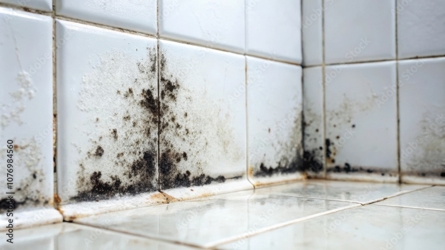In Fremont, Nebraska, where we experience significant seasonal humidity variations and frequent storms along the Platte River Valley, understanding mold growth after water damage is crucial for homeowners. Our unique climate, characterized by humid summers and varying winter conditions, creates an environment where mold can develop rapidly after water incidents. Whether you live in a historic home near Downtown Fremont or a newer construction in Deer Crossing, knowing how quickly mold can establish itself and spread is essential for protecting your property and health.
Understanding the Timeline of Mold Growth in Fremont Homes
The journey from water damage to mold infestation follows a predictable pattern, though it can be accelerated by Fremont's specific climate conditions. Our location in the Platte River Valley, combined with our warm, humid summers and varying seasonal moisture levels, creates ideal conditions for rapid mold development. During our peak humidity months from June through August, when relative humidity often exceeds 70%, mold can establish itself even more quickly than the standard timeline suggests.
In Fremont homes, the mold growth process typically begins within 24-48 hours of water exposure. This timeline becomes particularly relevant during our spring flooding seasons, when the Platte River's water levels rise and increase the risk of water damage. The process continues through several stages, with visible mold colonies often appearing within 3-5 days under optimal conditions.
Local factors, such as our older housing stock in neighborhoods like Miller Park and our newer developments near Johnson Lake, can influence how quickly mold develops. Older homes often have more porous materials and less effective ventilation systems, while newer homes might have tighter building envelopes that can trap moisture if not properly managed.
Why Does Mold Grow So Quickly in Fremont's Climate?
Our local climate presents unique challenges when it comes to mold growth. Fremont's position in eastern Nebraska exposes us to both continental and river valley weather patterns, creating conditions that can accelerate mold development. During summer months, when temperatures regularly exceed 85°F and humidity levels soar, the combination of heat and moisture provides perfect conditions for mold proliferation.
The seasonal temperature swings we experience in Fremont, from below-freezing winters to hot, humid summers, can create condensation issues in homes, particularly in basements and crawl spaces. This is especially noticeable in properties near the Platte River or in lower-lying areas of the city, where groundwater levels can influence indoor moisture conditions.
Several factors make Fremont homes particularly susceptible to rapid mold growth:
Our proximity to the Platte River increases ambient moisture levels
The clay-rich soil common in our area can hold moisture against foundations
Seasonal temperature variations create ideal conditions for condensation
Many local homes have basements, which are naturally prone to moisture issues
These environmental conditions mean that Fremont homeowners need to be particularly vigilant about water damage and moisture control throughout the year.
Critical Time Periods for Mold Prevention After Water Damage
For Fremont homeowners, understanding the critical time windows for preventing mold growth is essential. Given our local climate patterns, taking action within specific timeframes can mean the difference between successful prevention and a serious mold problem.
The first 24 hours after water damage are absolutely crucial. During this period, water can be extracted and surfaces dried without significant mold risk. However, in Fremont's climate, particularly during humid summer months, this window might be even shorter. Our experience with local properties shows that homes in areas like Inglewood or along Military Avenue might need even faster response times due to their proximity to water sources or soil conditions.
The timeline becomes increasingly critical as time passes:
0-24 hours: The window for preventing mold growth through complete drying
24-48 hours: Mold spores begin germinating in favorable conditions
48-72 hours: Initial mold colonies start forming, especially in hidden areas
72+ hours: Visible mold growth begins, with colonies expanding rapidly
This timeline can accelerate during Fremont's humid season, making prompt action even more important for local homeowners.
How Can You Stop Mold Growth After Water Damage?
Preventing mold growth in Fremont homes requires understanding both standard prevention techniques and adaptations for our local climate conditions. The key is acting quickly while accounting for our specific environmental challenges.
Immediate steps that work well in our climate include:
Using commercial-grade dehumidifiers suitable for Nebraska's humidity levels
Increasing ventilation while considering outdoor humidity levels
Removing wet materials promptly, particularly important in our older homes
Monitoring indoor humidity levels, crucial given our variable climate
These steps become even more critical in certain Fremont neighborhoods. Homes in low-lying areas near the Platte River or in historic districts might need additional measures due to their construction methods and environmental exposure.
What Areas of Your Home Are Most At Risk?
In Fremont homes, certain areas are particularly susceptible to mold growth after water damage. Understanding these risk zones helps in both prevention and early detection. Our local architecture and climate create specific vulnerable points that require extra attention.
Different areas face varying levels of risk based on their exposure to moisture:
Basements, especially common in older Fremont homes
Crawl spaces, particularly vulnerable during river valley humidity spikes
Attics, where our seasonal temperature changes can create condensation
Exterior walls, especially in homes predating modern insulation standards
These risk areas often require specialized attention in our climate, with particular focus needed during seasonal transitions when temperature and humidity fluctuations are most dramatic.
Contact ServiceMaster of Fremont for Expert Mold Prevention
When water damage threatens your Fremont home, quick action is essential to prevent mold growth. ServiceMaster of Fremont understands the unique challenges posed by our local climate and building styles. Our team has extensive experience dealing with water damage and mold prevention in homes throughout Dodge County, from historic properties to modern constructions.
Don't let water damage lead to a mold problem in your home. Contact ServiceMaster of Fremont today for immediate assistance or to learn more about our comprehensive water damage and mold prevention services. Our experienced professionals are ready to help protect your home from Fremont's challenging climate conditions.


